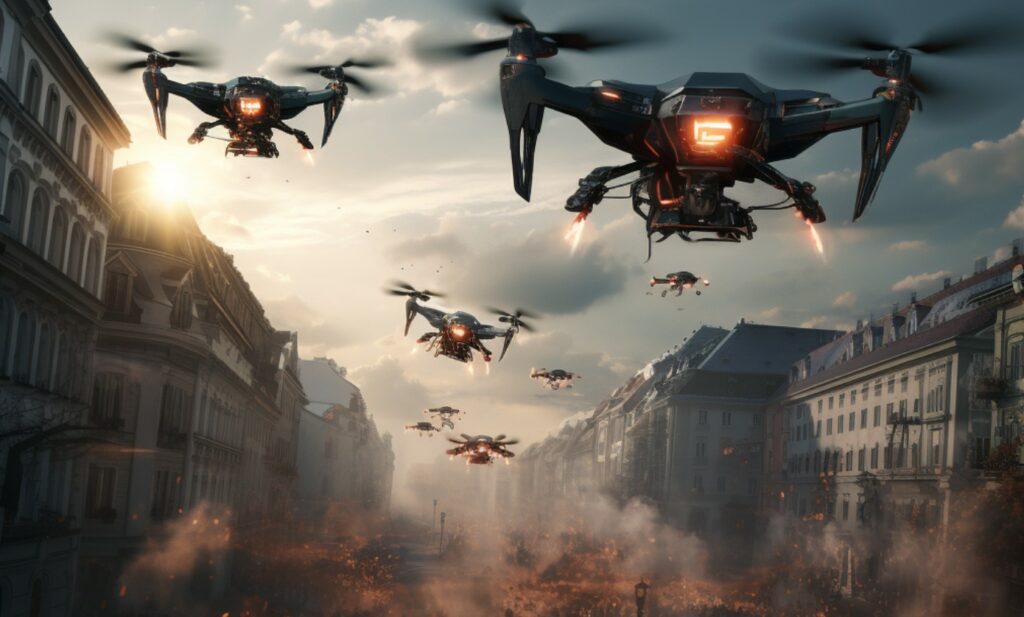
Redazione RHC : 9 August 2025 08:56
For the first time, it has been demonstrated that a robot can not only execute commands, but also program its own “brain system” from start to finish. This breakthrough was demonstrated by Peter Burke, professor of electrical and computer engineering at the University of California, Irvine. In his preprint, he describes how, using generative artificial intelligence models, it is possible to create a complete command and control station for a drone, not positioned on the ground, as is usually the case, but directly on board the aircraft.
The idea is that the project calls two objects “robot” at the same time. The first is the AI that generates the program code; the second is a Raspberry Pi Zero 2W-based drone that executes this code. Flight control is typically performed via a ground station, such as using the Mission Planner or QGroundControl programs that communicate with the drone via a telemetry channel. This system acts as an intermediate “brain,” from mission planning to real-time visualization. Low-level firmware, such as Ardupilot, runs onboard the drone, while an autonomous navigation system, such as ROS, is responsible for more complex tasks.
Burke demonstrated that, with the right tasking, generative AI models can be tasked with writing the entire software suite, from interacting with MAVLink to creating a web interface. The result is WebGCS: a web server located on the drone’s board itself, which provides a complete in-flight control cycle. The user can connect to this system via a network and issue commands via a browser while the device is in flight.
The project was implemented in several phases, across a series of sprints with different AI tools: Claude, Gemini, ChatGPT, as well as specialized development environments such as Cursor and Windsurf. Initially, sessions with Claude included requests to write Python code to fly the drone at 15 meters, create a web page with a takeoff button, display a map with the GPS location, and allow clicking to specify a destination. The AI would then generate an installation script, including the entire file structure. However, due to the limited context window, Claude was unable to process the entire request chain.
The Gemini 2.5 run failed due to errors in the bash scripts, and Cursor produced a working prototype, which, however, required refactoring as the code volume exceeded the model’s limits. The fourth sprint with Windsurf was successful: it required 100 hours of human labor over 2.5 weeks and resulted in the creation of 10,000 lines of code. By comparison, the Cloudstation project, with similar functionality, took four years to develop thanks to the efforts of several students.
The result highlights a major limitation of modern AI: its inability to effectively handle code sizes exceeding 10,000 lines. According to Burke, this is consistent with previous research, which showed that the accuracy of Sonnet’s Claude 3.5 model on LongSWEBench drops from 29% to 3% as the context increases from 32,000 to 256,000 tokens.
Despite the futuristic nature of the project, the developers have incorporated an element of control: manual intervention via a backup transmitter has always been possible during the process. This is necessary given the potential of autonomous navigation systems, which are already attracting attention from the military and space AI industries.
Geolava called Burke’s experiment a milestone: according to the company, the autonomous assembly of a command center in the sky paves the way for a new paradigm of space intelligence, in which sensors, planning, and decision-making are combined into a single, real-time whole. Even partially automated platforms like Skydio are already starting to change the approach to environmental analysis.
 Redazione
Redazione